Text and Photos by Henrylito D. Tacio
I had been to Negros twice. The first time was when I joined a group of lifestyle journalists who hopped from one city to another to see the island’s attractions. There were so many places to cover that only a few of them really struck my attention.
But on the second time I came to Negros Occidental, I became interested in Balay Negrense (Hiligaynon for Negrense House) in Silay City. It is touted to be the first museum to be established in the province.
So far, the National Historical Institute has identified 31 ancestral houses in the city, which is where the Bacolod-Silay International Airport is located.
Built in 1897, Balay Negrense is a typical “bahay na bato” (literally “house of stone”). However, reflecting American colonial influences, the lower story is concrete instead of being constructed of stone. Trunks of the balayong tree, a local hardwood, were used as foundation posts; the same material was used for floorboards. The upper story is built of wood topped with a roof of galvanized iron instead of tiles.
Like most ancestral houses, it has a four-meter high ceiling and large windows with Spanish-style ventanillas, those smaller windows beneath the large windows with sliding panels that can be opened to allow the fresh air to enter.
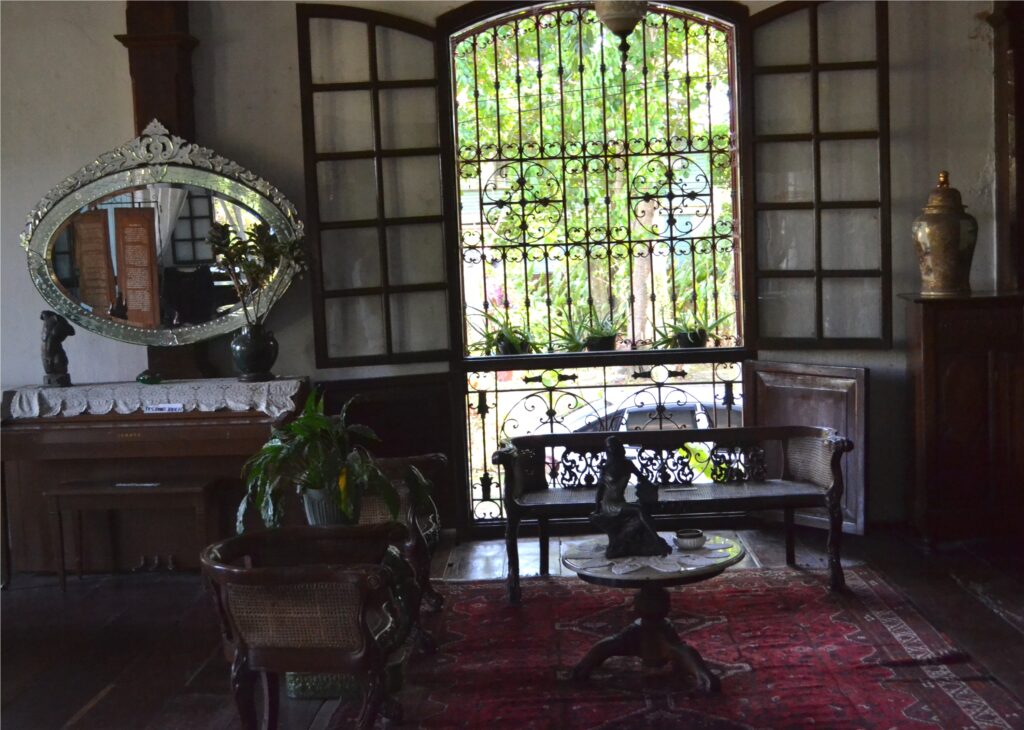
Antiques 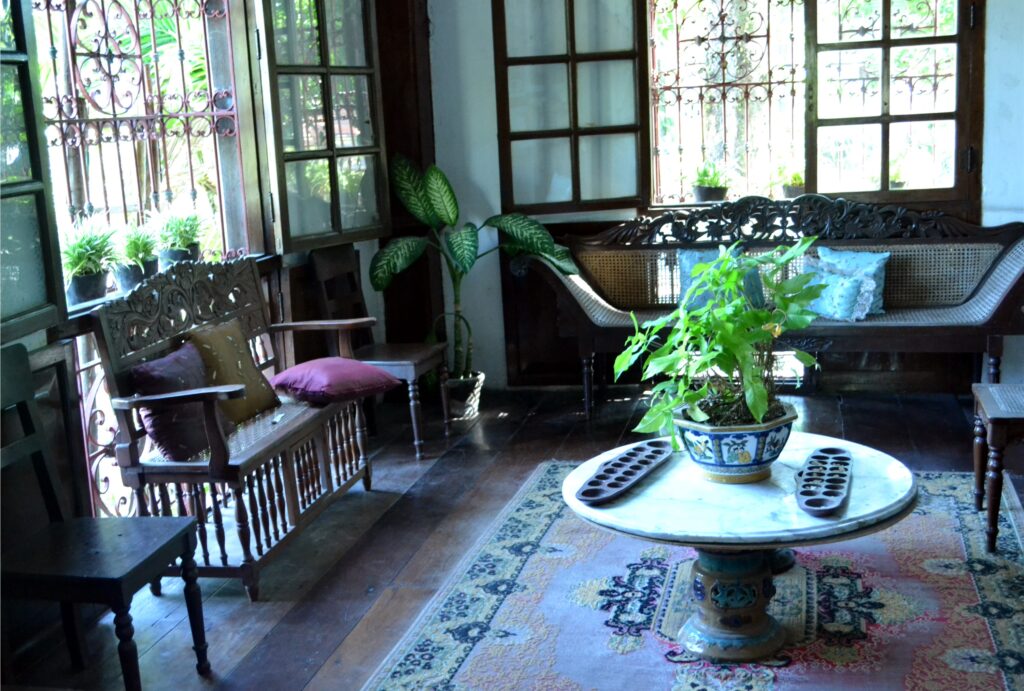
Receiving area
The lower story itself is elevated from the ground level by a meter-high crawlspace. The reason for this was to allow the wooden foundations to be aired to prevent dampness from rotting the wood.
In those days, the ground floor at the back of the house was used as a storage and garage of carriages. A servants’ quarter was also built with a stair going to the second floor where the kitchen was located.
It was so hot when we got to the place. Fortunately, there were not too many visitors. In fact, there were only a couple of foreigners who were ahead of us. After paying the entrance fee of P50 per person, a guide came and started explaining the origin of the house.
We learned that it was Victor F. Gaston, the firstborn son of the wealthy Yves Leopold Germain Gaston and Prudencia Fernandez, who built the house. The elder Gaston was one of the pioneers of sugarcane plantation on the island. Actually, a French citizen, the sugar baron, came to the Philippines and met a Filipina from Batangas, where he did some experimentation on sugar production.
After getting married, the couple tried their luck in Negros. Victor was still residing with his parents at Hacienda Buen Retiro when his wife died. So, he decided to build his own house. He and his twelve moved to what is now known as Balay Negrense in 1901. He lived there until his death in 1927.
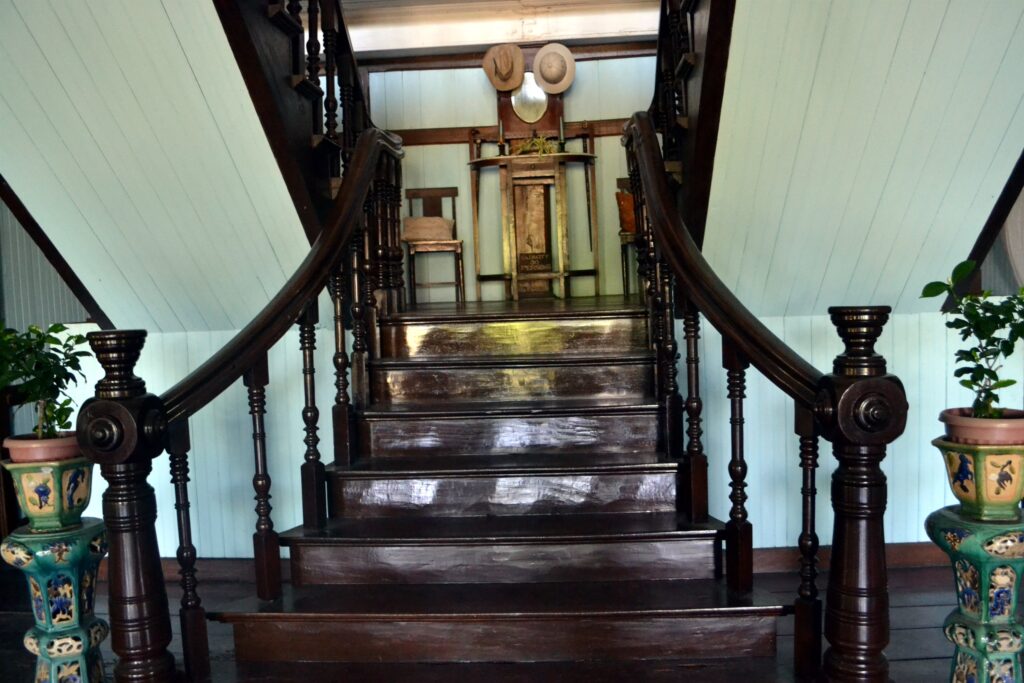
Grand staircase 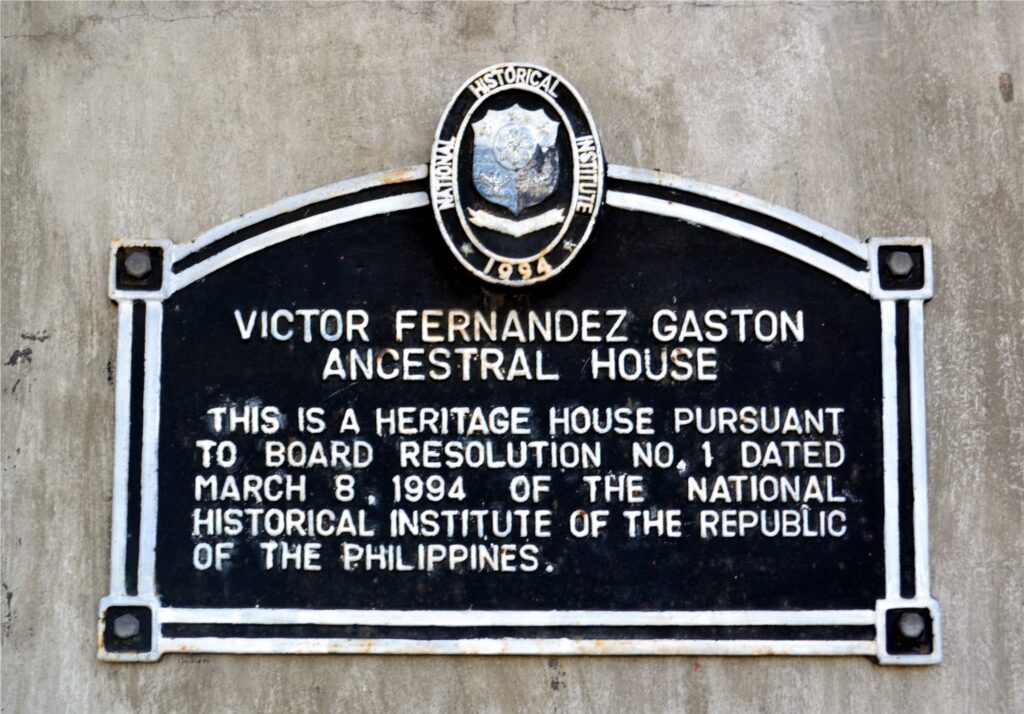
Historical marker
Several years later, as children grew up and had their respective families, the house was neglected, and the beauty of the mansion faded in no time. In the mid-1970s, it was completely abandoned and fell into despair. But one of the heirs, Msgr. Guillermo Ma. Gaston saw the importance of the house for the people of Negros.
It was at this time that the Negros Cultural Foundation came into existence, of whom Msgr. Gaston was a member. In 1992, he donated the house to the Philippine Tourism Authority (now called Tourism Infrastructure and Enterprise Zone Authority). With donations from prominent individuals and the government, the structure was repaired and furnished with period furniture and fixtures.
On October 6, 1990, the museum was officially inaugurated. According to Board Resolution No. 1 (dated March 8, 1994) of the Philippines’ National Historical Institute, it was listed as a heritage house.
After a short lecture on history, our guide showed us a big round table with lists of the names of the owner’s descendants. Some of them were familiar names, being celebrities, and politicians.
But what is interesting about the house is that almost half of the first floor was used as a receiving area. There are several chairs but what caught our attention was a long chair with sort of a cage below it. “That’s where the chickens of the visitors were kept,” our guide explained.
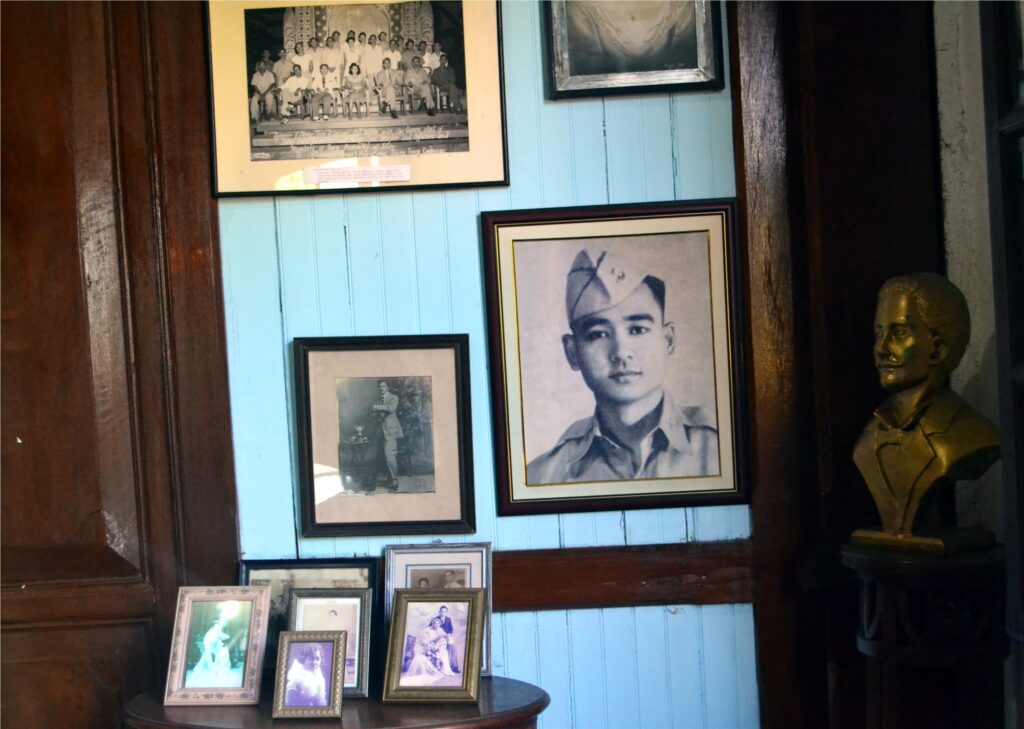
Photographs and memories 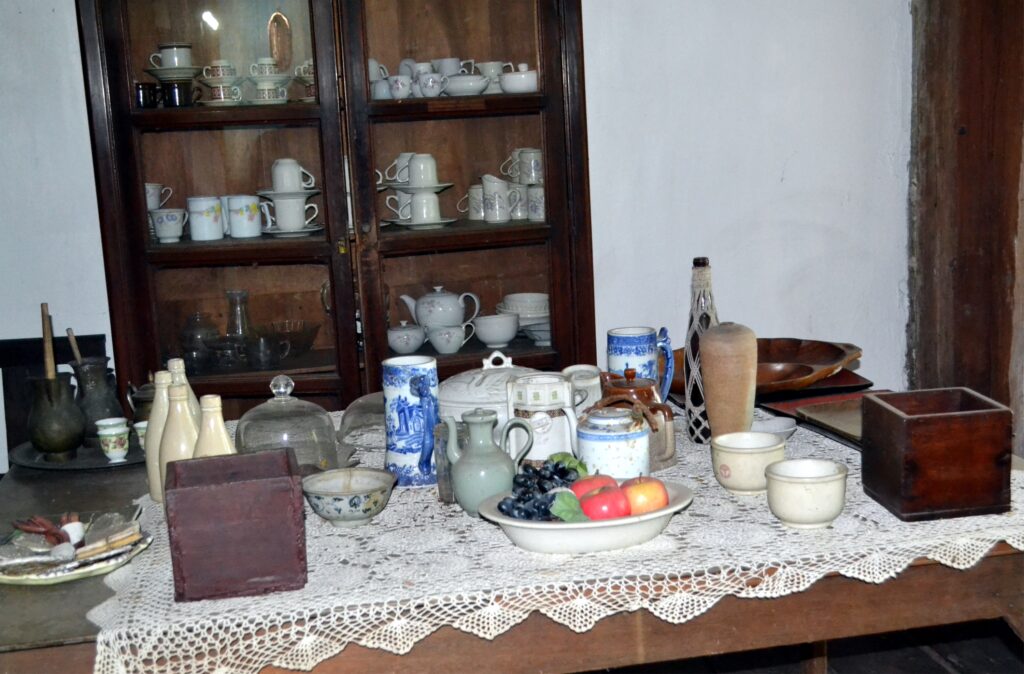
Kitchen wares and utensils
From the huge sala, you can help but notice the grand staircase to the main part of the house. Actually, there are two stairs. “On the right side, that’s where the girls go up while the left side is the boys’ territory,” our guide said.
The second floor was absolutely deserted. There were several rooms, and each room has a different display. Most of the rooms are cordoned off, so we didn’t have the opportunity of exploring each. But we contented ourselves by taking photos.
You get to see chandeliers hanging, portrait sized mirrors with intricate designs, wooden cabinets and beds, and several rocking chairs. Among the collections scattered all over the place are the charcoal iron, antique kitchen wares, and small jars, typewriters, telephone, phonograph, piano, and some dolls.

Old bed 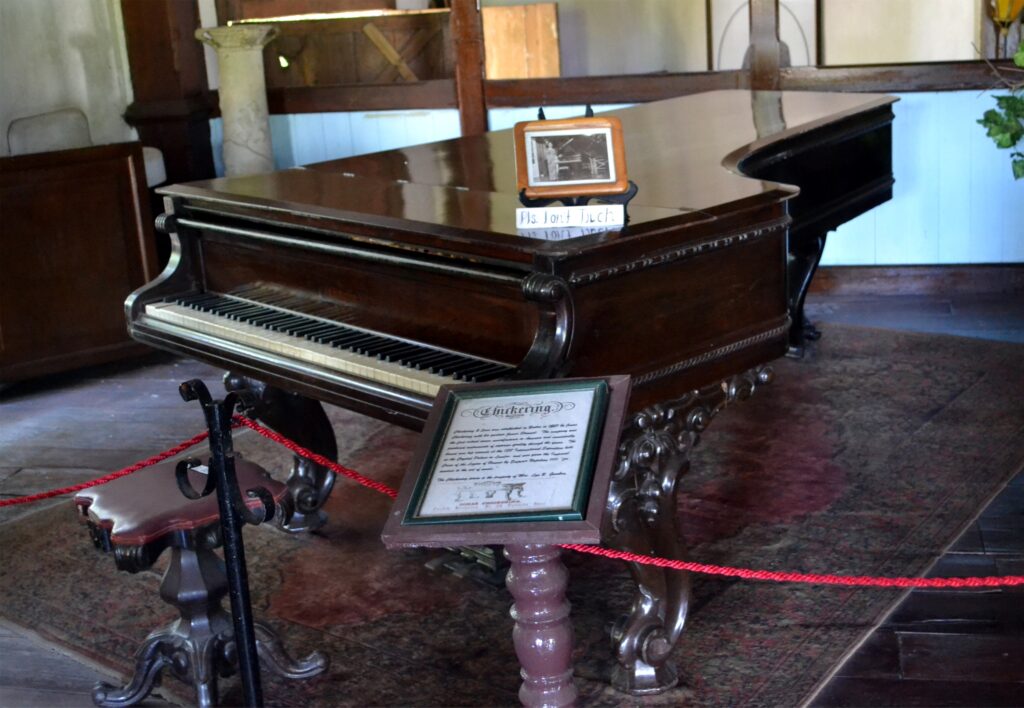
Antique piano
One scribe wrote: “The Balay Negrense is not only about a family but it denotes the story of the town from its lifestyle, culture and tradition. It reminisces those days gone by.”
Balay Negrense is located at Cinco de Noviembre Street of Barangay III.

